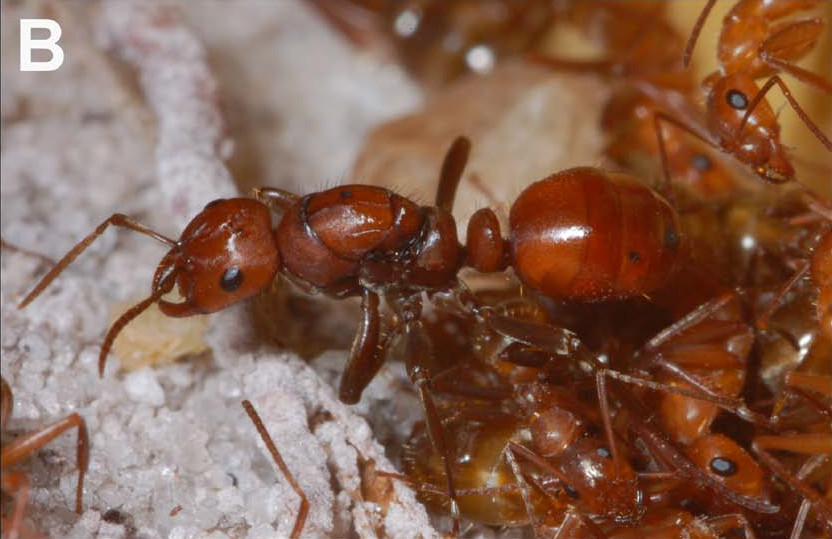Slave-making ants are brood parasites that capture broods of other ant species to increase the worker force of their colony
Their goal is to be king.
You had better have one King than five hundred. Charles II
Let’s look at the life of the ‘ant kings’
The slave-making ants are the offspring of the other ant species, which catch the offspring of their colonies to increase the labor force of their colonies. After the slave-worker appeared in his home, while the slave workers worked as if they were in his own colonies, the parasitic workers concentrate only on the renewal of the worker’s power from the neighboring home nests through a process called a slave raid.
Slave-making ants specialize in parasitizing a single species or a group of related species, and are usually close relatives to hosts typical of social parasites. Slave-makers can be either permanent social parasites (therefore, depending on their enslaved ants all their lives) or facultative slaves. Behavior is unusual among ants, but has evolved several times independently.
 Wikimedia Commons
Wikimedia Commons
“They use chemical warfare”
New slaves may belong to the same species as the host. If the host leaves the nest after the first attack, the slaves can force their own relatives into slavery.
This is bad enough? Also, the slave-makers create confusion in the nests they attack. “They use chemical warfare” says Susanne Foitzik of the Johannes Gutenberg University Mainz in Germany.
Like all social insects, slave-maker ants have Dufour’s glands that secrete the chemicals that ants use to communicate. “They use the Dufour’s gland to manipulate host defenders into attacking each other instead of fighting against the slave-maker” says Foitzik.
Also, the enslaved hosts set off with slave workers and bring back more slaves.
At this point, slave construction may sound like an extremely effective way to live. But the limits of its effectiveness are evident, because slavery is rare in the ant world.
“It looks like slavery evolved independently in six different lineages”
 Wikimedia Commons
Wikimedia Commons
Between about 15,000 known ant species, slave-making has been recorded in only 50. Of the 21 sub-families known in the ants, only two have slaves. Five different subgroups of slave-making ants belong to a relatively small group, Formicoxenini.
Foitzik thinks there might be more out there. In 2014 her team described a new American slave-maker species called Temnothorax pilagens. “We found it in Michigan, Vermont and New York, even though one would think that the ant fauna of the US is well studied.”
“What is more clear is that slave-makers can be very common, reaching densities of one slave-maker colony for every five host colonies”, says Foitzik.
Based on the ant family tree, slavery evolved independently in six different strains. But it’s not clear how.
Slavery is a form of parasitism. Slave-making species are often totally dependent on their host computer, especially group behavior of hosts.
 Wikimedia Commons
Wikimedia Commons
“It is also ripe for picking by slave-makers”
Many slave-makers are closely related to their host species and share chemical signals. This suggests that the common ancestors of both the host and the slave-maker are a species that is divided into two groups. These groups did not mate with each other, formed two different species - one of them was the slave-makers.
Meanwhile, the host species tend to create relatively dense and well-defended nests.
Example, Temnothorax hosts are common in temperate forests. These are up to 10 slots per nests meter – mostly under fragile areas or stones, such as nuts and plank cavities. Each colony has only a few people, so it can easily be divided into many small nests - but it also matures to be collected by the slave-makers.


Comments